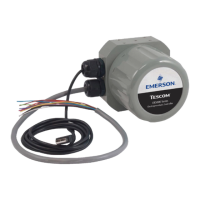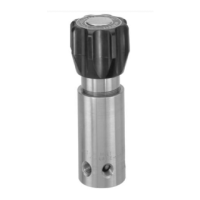ER5000 —
37
How It Works
“critically damped,” with just enough Derivative added to eliminate
overshoot completely. Both tunings have no offset. Curve B
would be an optimal tuning for an application which can tolerate
overshoot, Curve C for one which cannot.
To restate the rules of thumb for each component:
Proportional (P):
• Higher settings result in shorter rise times and faster response.
• Higher settings also make the response less stable, with
overshoot and ringing. Overshoot may tax the physical
limitations of the system.
• Lower settings result in slower response.
Integral (I):
• Higher settings accelerate the response.
• Higher settings also increase instability.
• Lower settings result in a less responsive controller.
• Because Integral windup continues to push the response even
after the system has reached stable state, higher Integral
settings can eliminate offset.
• Windup can delay the controller’s response to new errors, as
accumulated errors must “spool out” before new errors can
begin “charging up” Integral. The ER5000 features exclusive
Integral Limits to control positive and negative windup, allowing
you to use higher Integral settings.
• The Integral of small errors can, over time, accumulate to the
point of causing unwanted activation of the controller. The
ER5000 features an exclusive lter called Integral Deadband
to mitigate this effect.
Derivative (D):
• Higher settings correct overshoot and ringing.
• Higher settings also decrease settling time and increase
system stability.
• Higher settings may overdamp the system, causing a slow
rise time.
• Paradoxically, higher Derivative settings can make some
systems unstable by increasing sensitivity to transient
changes (noise) in the operating environment. This sensitivity
can decrease the operational lifespan of the ER5000’s
solenoid valves due to frequent activation.

